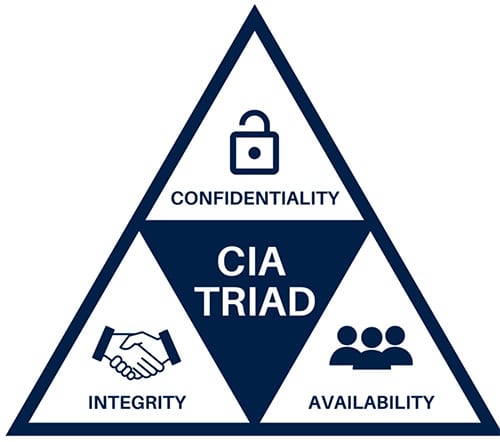
Introduction:
As the cybersecurity landscape continues to evolve, the traditional CIA Triad—Confidentiality, Integrity, and Availability—has expanded to accommodate new challenges and considerations. In this blog post, we'll explore the Extended CIA Triad, which introduces additional dimensions to address emerging threats and complexities in the digital realm.
Confidentiality - Privacy:
- In the era of data privacy regulations and heightened awareness, safeguarding personal information has become a critical aspect of cybersecurity. The Extended CIA Triad incorporates Privacy as an extension of Confidentiality, emphasizing the ethical and legal responsibility to protect individuals' sensitive data.
Integrity - Authenticity:
- Beyond ensuring data remains unaltered (integrity), the Extended CIA Triad introduces Authenticity. This involves verifying the origin of data and ensuring that it comes from a trusted source. Digital signatures, certificate authorities, and secure authentication mechanisms play a crucial role in establishing the authenticity of information.
Availability - Resilience:
- In an age of sophisticated cyberattacks and unforeseen disruptions, the concept of Availability expands to include Resilience. Resilience goes beyond merely maintaining uptime; it involves the ability to adapt, recover, and continue operations in the face of various challenges, including cyber incidents, natural disasters, and other disruptions.
Confidentiality - Non-repudiation:
- Non-repudiation becomes an extension of Confidentiality, ensuring that individuals cannot deny their actions or transactions. This is particularly important in legal and contractual contexts, where accountability and traceability are essential.
Integrity - Immutability:
- Immutability complements data integrity by ensuring that once information is written or recorded, it cannot be altered or deleted. This is crucial in applications such as blockchain, where the integrity and permanence of data are foundational.
Availability - Scalability:
- Scalability becomes an integral part of ensuring availability in modern systems. As organizations grow and technology evolves, the Extended CIA Triad acknowledges the need for scalable architectures that can handle increased demand while maintaining performance and reliability.
Confidentiality - Obfuscation:
- In the context of protecting intellectual property and sensitive information, obfuscation techniques come into play. Obfuscation involves making data unclear or difficult to interpret for unauthorized individuals, adding an extra layer of protection.
Integrity - Diversity:
- The concept of Diversity in the Extended CIA Triad recognizes the importance of diversifying security measures to prevent single points of failure. This includes employing diverse security controls, tools, and practices to enhance the overall security posture.
Conclusion: Adapting to the Complexity of Cybersecurity
The Extended CIA Triad reflects the dynamic and multifaceted nature of modern cybersecurity. By incorporating additional dimensions such as Privacy, Authenticity, Resilience, Non-repudiation, Immutability, Scalability, Obfuscation, and Diversity, organizations can adapt to the evolving threat landscape and build comprehensive defense strategies. As we navigate the digital frontier, the Extended CIA Triad serves as a guide, ensuring that cybersecurity practices evolve to meet the challenges of a rapidly changing technological landscape.
